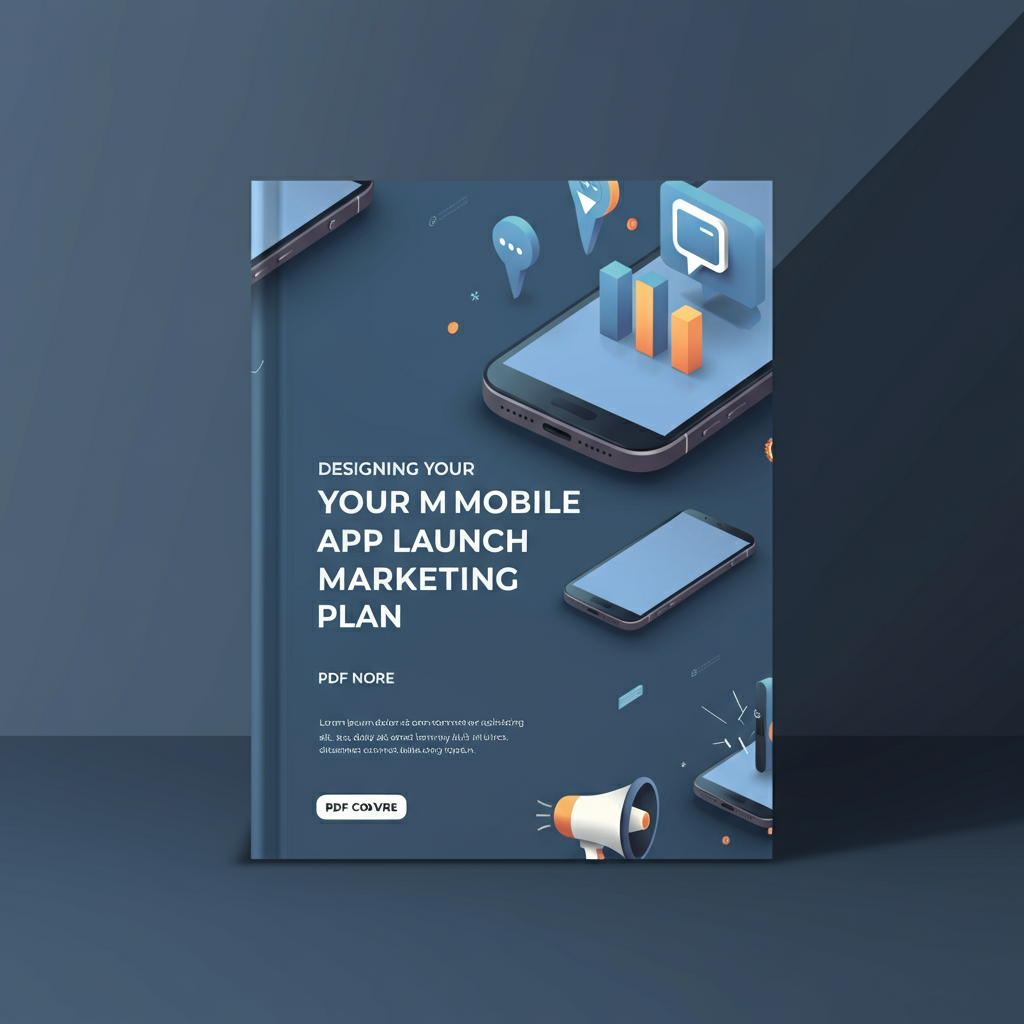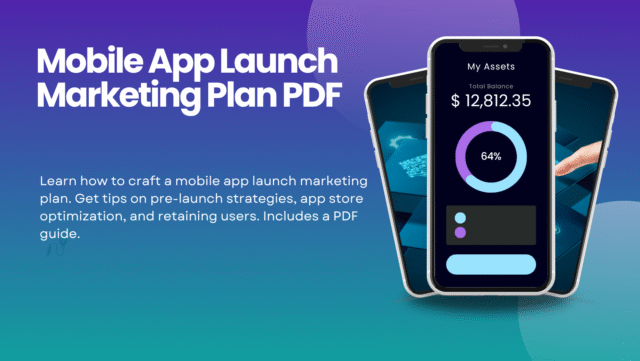Launching a mobile app is no small feat. Whether you’re an indie developer or part of a startup team, the moments leading up to your app’s launch are critical for its success. Without the right marketing plan, even the most innovative apps can fail to capture users’ attention in a highly competitive marketplace.
The Importance of a Strong Mobile App Launch Strategy

Millions of apps comprise the app stores today, which makes it especially difficult to get noticed. As of 2023, if the data from Statista is to be taken seriously, Google Play has just over 3 million apps and Apple App Store hoo-hah over 2 million. Therefore, every day, new apps can only join a stuffed digital universe.
A carefully planned mobile app launch marketing strategy is the key to giving your app an early advantage in the market. It allows you to build your target audience before the official launch and makes user acquisition afterward go more smoothly. Additionally, a written PDF marketing plan ensures that your process is clear, brief, and able to be shared with your team and stakeholders.
Why a PDF Marketing Plan?
A PDF marketing plan offers several advantages, including:
- Accessibility across devices.
- Easy sharing with business partners, investors, or team members.
- A professional, visually appealing format that ensures clarity.
Now, let’s explore how to build a successful mobile app launch marketing plan from start to finish.
Key Elements of a Mobile App Launch Marketing Plan
Step 1. Set Clear Goals for Your App Launch
Before anything else, define specific, measurable, and achievable goals for your app launch. Ask yourself these questions:
- What is your main target? Is it downloads, user engagement, or generating buzz?
- What metrics will you track? These could be installs, daily active users (DAU), or signup conversions.
- What timeline are you working with? Knowing your deadlines ensures every task stays aligned with your objectives.
For example, your goal might be to generate 5,000 downloads within the first 30 days after launch or achieve a 25% user retention rate.
Step 2. Understand Your Target Audience
Your app’s success hinges on understanding who you’re building it for. Map out your ideal audience based on demographics, preferences, and behavior:
- Demographics: Age, location, gender, income, and occupation.
- App Usage Habits: Are they casual users or professionals looking for efficiency?
- Pain Points: What problem does your app solve for them?
Use tools like Google Analytics, surveys, or even social media polls to dig deeper into your ideal users’ needs. This insight is crucial to crafting messaging that resonates.
Step 3. Competitive Analysis
Next, research competitors in the same app category to identify what works and what doesn’t. Look for:
- Popular keywords they rank for on app stores.
- Features users love or criticize in reviews.
- Promotional strategies they’ve implemented.
By studying your competitors’ successes and missteps, you can position your app uniquely in the market.
Step 4. Optimize Your App Store Listing
More than 70% of users find new apps through app store searches. This makes app store optimization (ASO) a crucial component of your marketing plan. Key elements of ASO include:
- App Title: Use relevant keywords while keeping it brief and catchy.
- App Description: Highlight your app’s unique features and the value it offers.
- Icons and Screenshots: Use high-quality, appealing visuals to drive interest.
- Ratings and Reviews: Encourage early users to leave positive feedback.
For instance, if you’re launching a fitness app, include keywords like “workout tracker” or “training log” in your app title and description.
Step 5. Build Hype Before Launch
Your pre-launch phase is where you build excitement and engagement. Here’s how you can generate buzz:
- Launch a Landing Page: Create a dedicated landing page showcasing app benefits, features, and an option to sign up for email updates.
- Social Media Sneak-Peeks: Share teasers, behind-the-scenes content, and promotional videos.
- Collaborate with Influencers: Partner with content creators or influencers relevant to your target audience.
- Email Drip Campaign: Nurture your leads with email updates, exclusive previews, or early access offers.
Step 6. Leverage Paid and Organic Channels
Balanced marketing encompasses both organic and paid strategies:
- Organic Methods:
- Blog posts or case studies.
- Social media engagement through hashtags or partnerships with industry experts.
- Leveraging word-of-mouth referrals.
- Paid Strategies:
- Social media ads on platforms like Instagram and LinkedIn.
- App store ads to boost downloads and visibility.
- Google display ads targeting your app’s niche audience.
Step 7. Track User Analytics and Feedback
Once your app is live, it’s crucial to track user data to gauge performance and optimize accordingly. Useful tools include:
- Google Firebase: For real-time analytics.
- Mixpanel: Tracks user engagement and retention.
- App Store Console/Google Play Console: Tracks rank, reviews, and installs.
Additionally, send surveys or collect in-app feedback to address user concerns and refine your app’s experience over time.
Step 8. Include a Post-launch Engagement Plan
Post-launch, retaining users is just as important as acquiring them. Retention strategies include:
- Push Notifications: Send timely, relevant updates.
- Gamification Features: Encourage consistent use by creating engaging incentives.
- Loyalty Programs: Offer rewards to loyal users through referrals or exclusive discounts.
Designing Your Mobile App Launch Marketing Plan PDF

Your marketing plan PDF should be structured logically for all stakeholders to understand. Include:
- Introduction and Goals
- Target Audience Analysis
- Marketing Tactics (Pre-launch, Launch, and Post-launch)
- Visual Content like charts, tables, or app screenshots.
Tools like Canva or Adobe Spark can help you create beautiful and easy-to-read marketing documents. Ensure it’s downloadable from your website and optimized for SEO by using relevant keywords like “mobile app marketing” and “launch plan template.”
Take the First Step Toward Your Successful App Launch
It’s fun to build a mobile app, but precision and concentration are required. By following these eight steps and crafting a clear, actionable marketing plan for your app, you will dramatically boost its chances of success in the market.
Do you need an app launch marketing PDF to send to your customers? You can do it yourself with our free template (link), or you can contact our staff for expert help. The smarter you plan, the stronger your launch will be.




